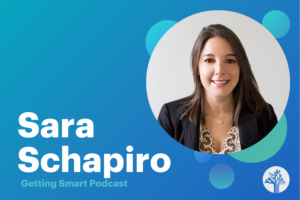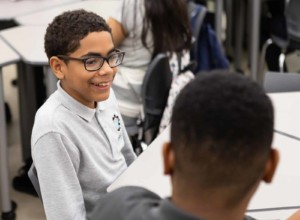Three Basic Needs that Must Be Met for a Successful Opening of Schools

A very long time ago, I was introduced to the ideas of Abraham Maslow while sitting in the gloomy lecture hall of an Intro to Psychology class. Over the decades I’ve found his hierarchy of needs to be a useful conceptual tool to structure my understanding of how individuals and organizations prioritize their needs.
As we stumble through the summer toward what will assuredly be a chaotic opening to school this fall, I’ve used Maslow’s structure to encourage educators in general, and my campus in particular, to focus on a progression of actions to ensure our work will be successful.
Here is my pyramid of needs, beginning of course at the bottom with the most basic and primary need.
Basic Need 1: Individual devices and internet access
A 2018 study by Microsoft reported that as much of 50 percent of the homes in the U.S. did not have access to high-speed internet. UNESCO reports that the picture is even gloomier around the world: “Half of all students currently out of the classroom—or nearly 830 million learners globally—do not have access to a computer. Additionally, more than 40 per cent have no Internet access at home.”
Clearly, the base need of this endeavor is an organized and rapid focus on getting functioning devices in the hands of learners and providing them with continuous access to high-speed internet.
Many companies recognize this basic need and are responding. Cox Communications announced it would offer free internet service through mid-July for eligible low-income families with a student in kindergarten through 12th grade who is studying at home. Google set up 100,000 wifi access points across California that continue to be free and is also giving away thousands of free Chromebooks.
Assuredly, every U.S. school will offer (or be forced to offer) some type of hybrid face-to-face and online learning this fall and winter. We need these initial campaigns from companies such as Google and Cox to continue and expand.
Basic Need 2: Training for teachers and students on productivity software
A device is in the hands of every student and teacher. Check. The device is reliably connected to high-speed internet. Check. Now what?
I teach in a school in which content is managed through Google Classroom. Every student and teacher is issued an iPad they can take home and use to complete work. We should have been ideally situated to adopt distance learning, but we weren’t. Within a week we learned we had failed at preparing students to use the devices.
- Our district did not have a rigorous approach to keyboarding so our middle school students did not know how to type faster than a crawl. Typically, they would read their assignments online, complete them with paper and pencil, and then use the camera on their iPad to take a picture of their work and submit it (see photo).
- We did not teach students how to check, read, and respond to email. I became so frustrated with the lack of response that I sent an email to every student telling them that the first six to respond would get a free McDonald’s lunch from me in September. I got three responses.
- I ignored the coding curriculum mandated for our sixth-grade electives and chose instead to teach the productivity suite on our iPads: Pages, Numbers, and Keynote. My obnoxiousness proved to be prescient—my students were the only kids in the school who had extensive experience using word processing, spreadsheets, and presentation software when we went to distance learning on March 23.
- We quickly learned that we did not prepare our teachers to use Google Classroom. There had never been meaningful training so only about 30 percent of our teachers were prepared for the switch to a content management system they were supposed to be using daily.
The solutions to these issues are manifest and manifold. And keep in mind this is not a zero-sum choice. You can teach English/Language Arts while teaching Pages (or Word or Google Docs). You can teach Keynote (or PowerPoint or Google Slides) while teaching history. You can teach math while teaching Numbers (or Excel or Google Sheets).
As for teacher training, I am a huge fan of Google Classroom so I enrolled in the Google Teacher Certification program. You can take this helpful series of online classes for free without taking the final exam.
As noted above, we must assume some form of distance learning will be a regular fixture of instruction this coming school year. If our students and teachers are to be successful we must provide structured and continuous training in productivity software.
Basic Need 3: Creating Community
My favorite Twitter chat (#pblchat) is run on a semi-regular basis by a group of project-based learning aficionados, many of them former colleagues at the Buck Institute for Education (PBLWorks). During a recent chat participants were asked to describe how we create classroom/school culture in our new distance-learning world.
I indicated the only reason I was moderately successful in establishing an effective online environment for learning was because I had spent the prior seven months working in concert with my teaching partner, grade-level team, administrative team, parent group, coaches, and support staff to create a healthy and supportive culture when I was face-to-face with my students. I lamented the challenge of replicating that accomplishment in the fall should we begin the year online with some or all of our students.
The trauma-induced behavior we will face this fall is daunting. Our students lives have been disrupted in ways we can’t yet understand, perhaps for the long term. For many students, especially those who face economic, personal, health, linguistic, and emotional challenges, school is the only structured environment they can find safety in. COVID-19 took that away from them.
As NPR reported in a recent piece, “Closed Schools Are Creating More Trauma For Students.” The news organization followed that with another entitled ”Loss, Grief, Stress: How The Pandemic Is Affecting Kids.” We will experience painful lessons in the accuracy of these forecasts when students return in September.
I am sure to face criticism for positioning Creating Community as my tertiary basic need. In a face-to-face world, Creating Community is my primary goal in the first months of school. But we are no longer operating in a face-to-face world. If students don’t have devices or access to wifi we can’t even reach them. If we can reach them but they don’t know how to operate the software, then our efforts at communication are moot.
This third need (now a goal) is the most difficult to achieve and the one I worry about the most. Now, more than ever, we must focus on social-emotional learning. Thankfully, advice is starting to arrive. I plan on following the guidance offered by Leah Henry, who penned an article called “Fostering a Strong Community in a Virtual Classroom” for Edutopia. Useful advice can also be found in BetterLessons’ blog under an entry entitled “Distance Learning: 3 Strategies to Build a Positive Classroom Culture.”
While we work on satisfying these distance-learning needs please keep in mind that the lure of shiny objects tempts us all. Educational technology companies spotted an opportunity to do well by doing good when schools en masse switched to distance learning in the spring. I was buried in sparkling offers for free access to tools and resources, and I jumped at the chance to use them. Socrative, Parlay, Kahoot, and Newsela will remain important features of my daily instruction. As good as they are, they do not fill the basic distance-learning needs of my students.
Let’s adapt and adopt the lessons Maslow taught us decades ago. If we do, the next school year is likely to be more successful.
For more, see:
- The Competing Mindsets of Technology
- How Schools Can Grow from Coronavirus
- Teaching Online in the Time of Coronavirus
Stay in-the-know with innovations in learning by signing up for the weekly Smart Update.
Getting Smart has launched the Getting Through series to support educators, leaders, and families on the path forward during such an uncertain time. This series will provide resources and inspiration as we face long term school closures, new learning environments, and address equity and access from a new lens. Whether you are just getting started with distance or online learning, or you’ve had plans in place and have the opportunity to share your work and guidance with others, there is a place for your voice and an opportunity to learn.
We’re going to get through this together, and we invite you to join us. Please email [email protected] with any questions or content you’d like considered for publication. We also invite you to join the conversation and on social media using #GettingThrough.








Elizabeth Borgmann
I am extremely grateful that you placed ‘Creating a Community’ as a top need. I think this is extremely important especially now more than ever! We need to establish safe and meaningful relationships with our children in addition to their parents/guardians. Reaching my children’s hearts will be my priority. Thank you for your article!